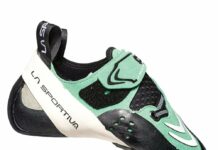Do you want to be an expert on hiking and camping gear before your next trip? This selected list of what to wear on a hike is for beginners and intermediate hikers who want to make the most of their hiking attire.
To enjoy hiking without worrying about what Mother Nature may hurl at you, you must have the proper equipment. However, you don’t need much to get started! Let’s talk about clothing demands by season.
#1. What should you wear on Summer hikes?
Personally, I enjoy summer hiking because it allows me to wear whatever I want! We don’t need to wear and take off our clothes more than once a day.
When choosing summer hiking clothes, keep in mind environmental hazards (e.g., ticks, poisonous plants, snakes, and so on) as well as terrain. Most terrain may be walked in hiking sandals or shoes, while longer hikes may need hiking boots. Choose shirts, bottoms, and socks made of breathable wicking fabrics (not cotton).
On hot days, lighter colors absorb less heat and might keep you more relaxed. In addition, undesirable hitchhikers favor darker hues. A wide-brimmed hat helps shield your face and neck from the sun.
#2. What should you wear on Winter hikes?
Hiking in the winter is a whole other beast, but it’s well worth the additional effort to take in the winter beauty of nature!
Layers are essential: a base layer with insulating capabilities, such as wool or cost-effective synthetic materials; an insulating, detachable middle layer; and a waterproof/windproof upper layer. A pleasant winter trip also requires hiking boots, thick wicking socks, wool or synthetic beanie cap, and warm gloves.
#3. What should you wear on Fallhikes?
While October is a great season to go hiking, temperatures may shift dramatically at any moment.Choose quick-drying underwear, a short-sleeved synthetic t-shirt, and a pair of breathable leggings as your base layer.
Add a mid-layer consisting of a zippered jacket for insulation, which will allow you to manage ventilation while giving the necessary warmth. If you think it will become too chilly as you go farther down the route, you may add a vest.
The outer layer might include a rain-proof jacket to protect your inner layers. Choosing a suitable pair of hiking pants that can withstand high winds and rain is even more vital. It’s even better if it’s a pair of convertible trousers that can be turned into shorts.
#4. What should you wear on Spring hikes?
Choosing the perfect combination of clothes for spring trekking may be difficult, and it all depends on the weather. Both wind and rain must be included in your plans. The wet season makes the hiking routes muddy, treacherous, and even flooded.
So, while designing your spring hiking outfit, follow the layering principles, but not as strictly as in the winter.
- Base layer: Use moisture-wicking materials. Depending on the climate, you may wear a short-sleeved or long-sleeved t-shirt. Don’t forget your socks.
- Mid-layer: Use a fleece or synthetic fill jacket.Depending on the environment, you may choose the thickness or number of layers. Just make sure the material is soft and breathable.
- Upper layer:Wear a waterproof jacket that isn’t too thick so that you don’t overheat. A zippered one is preferable to a pullover since it may be removed at any time. To protect yourself from the rain, you’ll need a pair of water-resistant trousers.
You may also interested in essential hiking gear
Just remember to bundle up if you’re trekking in the early spring. As the weather changes in late spring – and it will! – you may remove layers.















